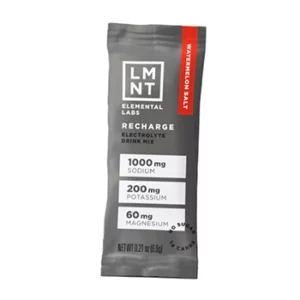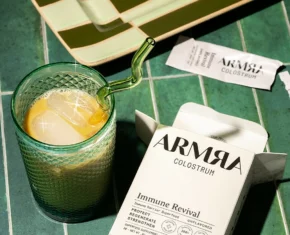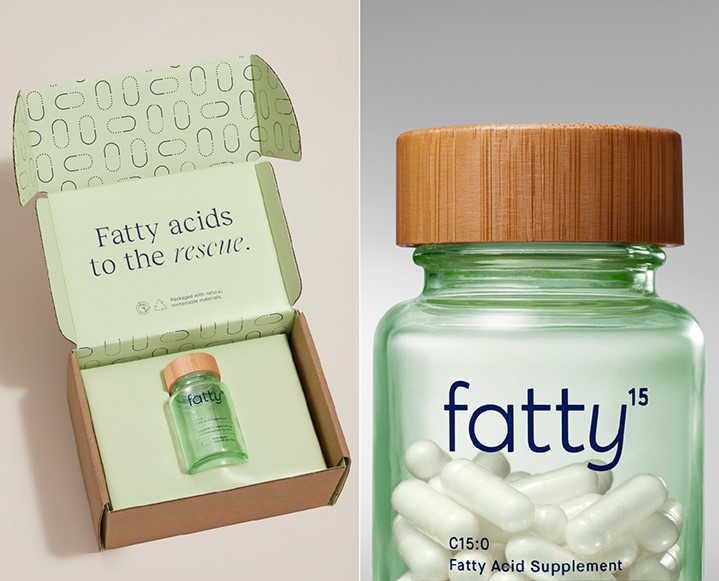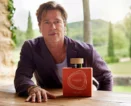Call it a gut feeling, but water kefir may be the next big health drink… again. This probiotic-rich super beverage has benefited bellies for hundreds of years, but it’s finding new life with the modern interest in natural wellness. It’s easier to make than kombucha, offers much of the same goodness to your digestive system, and can be flavored a million ways.
We’re learning to make the cultured stuff thanks to holistic expert and avid forager, Emily Han, who is also author of Wild Drinks & Cocktails. Make water kefir your healthy experiment for the month and let us know how it goes!
Before mass-produced sodas became the sugary villains they are today, sodas were regularly consumed for health reasons as well as for pleasure – soda fountains themselves were situated right inside pharmacies. These days, handmade sodas can still be good for you. Some sodas, such as those made from water kefir grains, even contain probiotics that can support healthy digestion. (Sounds good to me: I know I’d much rather get my probiotics from naturally fermented foods and drinks than from a pill!)
So, when it comes to soft drinks, there’s no need to limit yourself to the artificially flavored and high-fructose-corn-syrup-filled stuff you find in grocery stores. There are infinite ways to customize your homemade sodas, and it’s easy to tailor your fizzy drinks to your palate – and to the particular season, time and place in which you live.
Water Kefir Grains: Water kefir grains are a symbiotic colony of bacteria and yeast or SCOBY. (If you’ve ever had kombucha, you’re already familiar with a type of SCOBY.) Although they’re called “grains,” water kefir grains look more like gelatinous blobs thought they contain no actual grains or gluten. The grains must be purchased or obtained from a friend at the outset, but if you take good care of them, they’ll multiply and can be used to create infinite batches of soda.
Water kefir grains need steady attention, but once you get the hang of it, making water kefir can become an easy part of your regular routine. To flourish, the bacteria and yeast need unchlorinated, unfluoridated water and sugar. They also need minerals—and that means avoiding distilled water and, perhaps, giving them a little mineral supplementation. An unrefined sugar, a bit of molasses, or a little unsulfured dried fruit will give your water kefir grains the minerals they need. After a few batches, water kefir grains will start to multiply. See Wild Drinks & Cocktails for tips on handling multiplying water kefir grains, as well as putting them on hold if you’re going on vacation or want to take a break.
Don’t use honey, coconut sugar, agave, or sugar substitutes, though. Honey has antimicrobial properties and coconut sugar is very rich, so they can weaken water kefir grains; agave and sugar substitutes don’t contain the nutrients that are necessary for the water kefir grains’ survival. Keep in mind, too, that darker sugars will make a water kefir with a stronger flavor.
Water Kefir Soda: Although basic water kefir is drinkable, it becomes much more palatable when you turn it into a flavored soda. Enhance the kefir with tea, juice or fruit; let the carbonation build for a day or three and you’ll have a refreshing and fizzy soda filled with healthful probiotics. The sky’s the limit, so feel free to get creative with your flavorings. A few of my favorites are lemon balm tea, grapefruit and sage and prickly pear fruit.
Because of the pressure that builds up from carbonation, there’s always a risk that bottles might explode. If you are new to making sodas or other fermented drinks, I strongly recommend that you do all your bottling in plastic bottles. If you’re using a plastic bottle, you’ll know your soda is carbonated and ready if the bottle feels firm when squeezed. (You can also open the bottle occasionally to sample the soda and test for fizziness.) If you do use glass bottles, use swing-top, Grolsch-style bottles that are meant for carbonation. Carefully open or “burp” the bottles several times a day to release excess gases.
Basic Water Kefir
Yields 1 quart
Ingredients:
1 quart unchlorinated, unfluoridated water
1/4 cup cane sugar, such as white sugar, raw sugar, turbinado, or sucanat
2 Tbsp water kefir grains
1/2 tsp blackstrap molasses, or 4 unsulfured raisins, or 1/2 unsulfured dried fig
Directions:
Combine the water and sugar in a clean 1/2-gallon (2 L) jar. Cover the jar with a lid and shake it until the sugar dissolves. Remove the lid and add the water kefir grains to the jar. Add the molasses. Loosely cover the jar with a coffee filter, cloth, or hard lid. Store the jar at warm room temperature, out of direct sunlight, and let it ferment for 48 hours. (If left longer than 48 hours, the grains may starve and disintegrate.) As it ferments, the water will turn cloudy and slightly bubbly, and it will start to taste less sweet than the original sugar water.
Prepare a new jar of sugar water, repeating the steps above. Strain the fermented water kefir through a fine-mesh strainer into a jar. Transfer the water kefir grains to the new jar of sugar water. The finished water kefir is now ready to be flavored and turned into soda.
Note: Water kefir grains can react with metals such as aluminum, so always use nonmetal or stainless steel strainers and other utensils.
Reprinted from Wild Drinks & Cocktails by Emily Han, with permission from Fair Winds Press, copyright 2015.
Water Kefir Soda
Yields 1 quart
Ingredients:
2 1/2 cups finished Basic Water Kefir
1 1/2 cups flavored liquid
Flavored liquid options:
1/2 cups liquid with 2 to 3 Tbsp sugar or honey, or
1 1/2 cups unsweetened fruit juice, or
1 quart of water kefir with 1/2 to 2 cups chopped fruit
Directions:
Make sure any flavored liquid, such as an infusion, a decoction, or fruit juice, is completely cooled before using.
Using a funnel, pour the water kefir into a clean bottle. Fill the rest of the bottle with the flavored liquid, leaving at least 1 inch of headspace. Cap the bottle tightly and shake it well.
Store the bottle at room temperature, out of direct sunlight, for 12 to 72 hours. When the soda is carbonated, transfer the bottle to the refrigerator. Store in the refrigerator and drink within 1 month.
Reprinted from Wild Drinks & Cocktails by Emily Han, with permission from Fair Winds Press, copyright 2015.

















